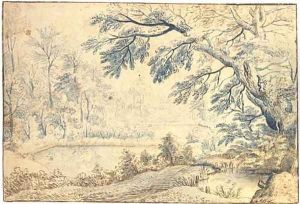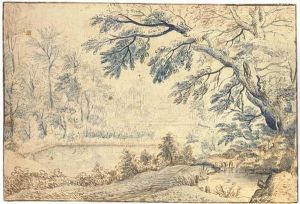Gysbrecht Lytens Paintings
Gysbrecht Lytens was a Flemish painter of the Baroque period, known for his contribution to the still life genre, particularly in the area of flower paintings. Born in 1586 in Brussels, which was then part of the Spanish Netherlands, Lytens lived during a period of significant political and religious turmoil in Europe, which was reflected in the art of the time. The Spanish Netherlands, especially Flanders, was renowned for its artistic production, and Lytens was among the artists who thrived in this rich cultural environment.
Lytens' work is characteristic of the Flemish Baroque style, with its emphasis on detail, rich coloration, and complex compositions. Despite the general scarcity of information about his life, it is known that he was active in Brussels, and his paintings suggest that he was well-acquainted with the works of other Flemish masters, such as Jan Brueghel the Elder, from whom he drew significant inspiration. His still lifes often depict an abundance of flowers arranged in intricate bouquets, showcasing a variety of species, each rendered with great care and attention to detail.
The artist's technical skill is particularly evident in his treatment of light and texture, which imbue his paintings with a sense of depth and realism. Lytens was adept at capturing the translucence of flower petals and the interplay of light and shadow, which gives his compositions a lively and tangible quality. He sometimes incorporated symbolic elements into his work, which was common among still life painters of the time, using flowers and other objects to convey moral or religious messages.
Although Gysbrecht Lytens may not be as widely known as some of his contemporaries, his contribution to the development of the still life genre in Flemish art is significant. His paintings can be found in various museums and collections, appreciated for their beauty and technical mastery. Lytens died in 1656, leaving behind a body of work that continues to be studied and admired for its artistic merit and historical importance within the Flemish Baroque tradition.



